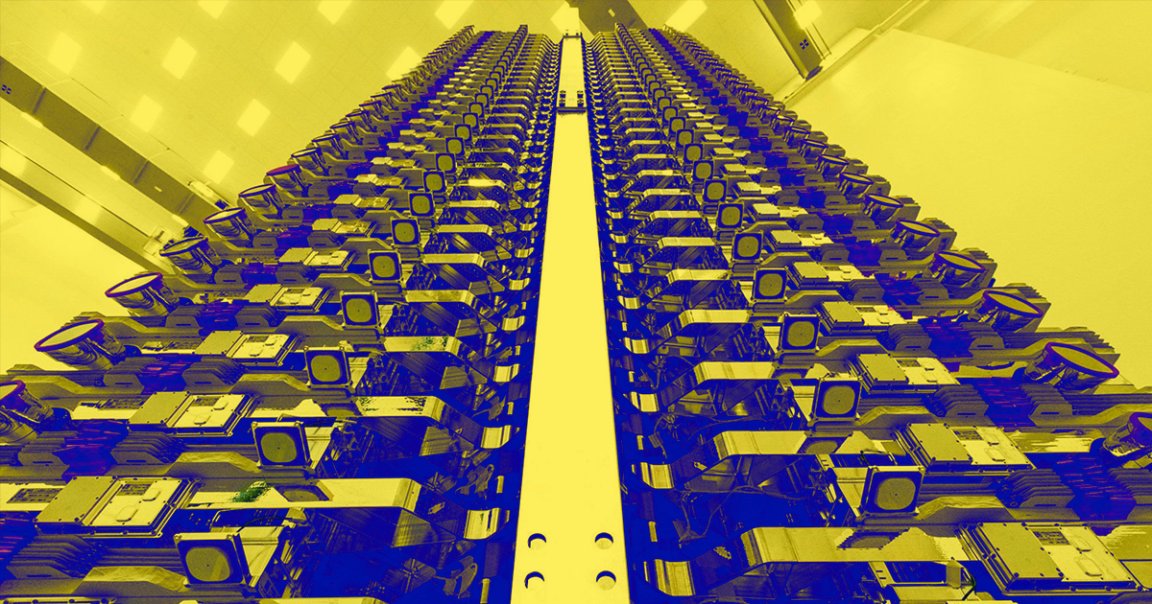
Bright Star
The International Astronomical Union (IAU), an association made up of more than 12,000 astronomy professionals from across the globe, released a statement calling for the regulation of satellite constellation efforts — including SpaceX’s Starlink initiative.
The news comes after SpaceX launched the first 60 of some 12,000 planned low-Earth orbit satellites last month — but the unusually low altitude of their obit had some astronomers worried that they would interfere with space exploration efforts.
Radio Interference
The IAU statement raises two concerns. The first is that the reflective metal used on the Starlink satellites could reflect the Sun and “make them appear as slow-moving dots in the night sky” — which could mess with data collected by telescopes back on the ground, whether they can be spotted by the naked eye or not. The second is that radio signals from the satellites could “threaten astronomical observations at radio wavelengths.”
“Recent advances in radio astronomy, such as producing the first image of a black hole or understanding more about the formation of planetary systems, were only possible through concerted efforts in safeguarding the radio sky from interference,” read the statement.
As a result, the IAU calls for agencies to “devise a regulatory framework” to make sure future scientific efforts are not thwarted by similar satellite projects.
READ MORE: Astronomy group calls for urgent action on SpaceX Starlink satellites [New Scientist]
More on Starlink: SpaceX’s Starlink Satellites Could Make Space a Minefield